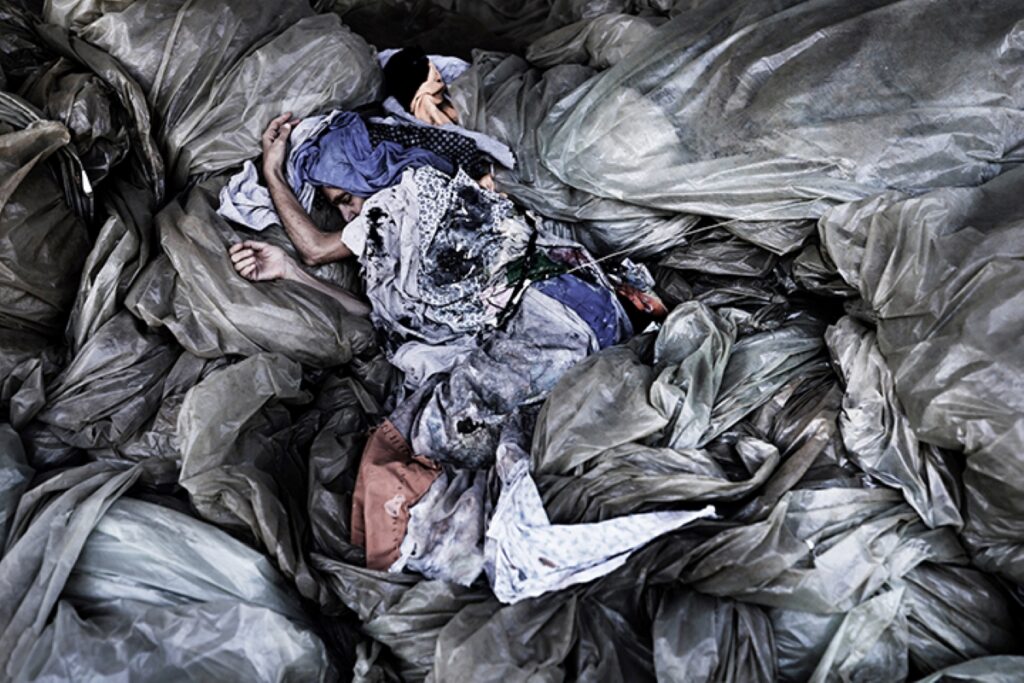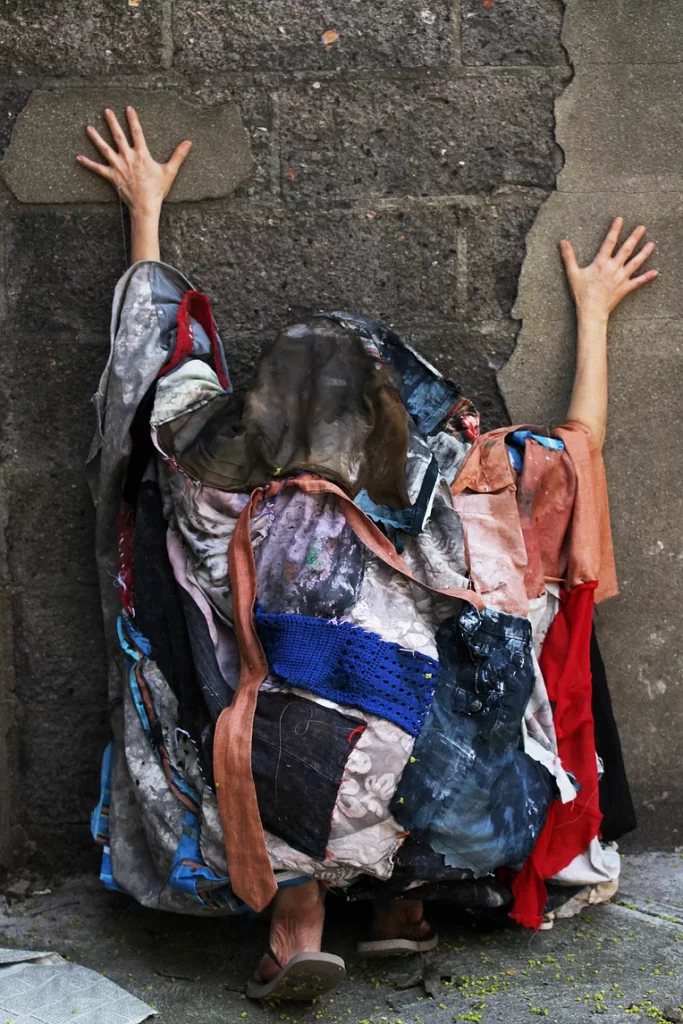Visual artist Deborah Wasserman merges the female figure with the landscape in her paintings, collage and performative works. Her ongoing investigation the feminine experience and woman’s roles are informed by her “own complex sense of ‘unbelonging’ growing up with several identities.” This episode includes a conversation with the artist–an engaging deep dive into her works and personal histories.
.
Resources: “Wander, Woman” exhibition (2018), Deborah Wasserman website
“Bindle,” performative series, 2018


Script: Episode 130: Deborah Wasserman: Migration: Land and the Feminine Body
Today we will experience and witness the woman artist Deborah Wasserman and her ongoing dialogue between the female body and the landscape—this visual merging of woman with the landscape engages us to Wasserman’s “experiences of being a woman, a migrant, a mother, a worker.” Rooted in these works is her “rich South American and Middle-Eastern background, my life voyages and nomadic history.” Wasserman experienced a lot of relocation. “My life voyages,” –I just love that that phrase, “my life voyages” truly captured my attention—she could have written “journey” but voyages that takes on a different meaning. There is a sense of something much more epic, the horizon lines of her life are more deeply broadened in my connection with “voyage.” And as we will see, I think we can also interpret voyage in her art from her words– as she writes, “often reflects the yearning to belong and the urge to embrace multiplicity”—these are not just abstract ideas; yearning, multiplicity,–they are tangibly expressed through materials, her artistic processes, and variety of assumed personas.”
We experience this melding and all it represents through the media of painting, collage and performance. This episode includes a conversation with the artist—I had the opportunity to visit with Wasserman at her studio in Queens, New York. So fabulous—I explored her collages, and some of her large scale paintings, including Whispers in the Trees —brightly colored imagined landscape of sinewy trees and thick underbrush—you can see figures of women, one embraces a trunk of one tree, her face leans up against the bark, her eyes closed, her hands and arms and face have a brown and green hue—the narrative “seeks to a connection to place—Where do I belong and finding the answer in the land, “my country is in the pure space of land. Earth and land is my feminine religion” says Wasserman. Mother Earth provides the artist with sustenance and a feminist connection. As you will hear in our conversation one of the prevailing themes in her work is this deep desire for connection and belonging. It is the Earth that grounds her to place and to a feminine identity.
Let’s take a close look at one of Wasserman’s performance work: From 2018, “The Bindle, Deborah Wasserman performer, Queens, New York.” Artists who engage in performance art generally document it in photographs and sometimes the photographs are accompanied by text. Our journey through this “performance” work encompasses the photographs and a poem.
Two images from the series, especially once you understand the context, just gut wrenching yet hauntingly beautiful. In one image, the “bindle” (bindle is the Yiddish word for bundle) covers Wasserman’s body, including her head. She is facing a stone wall, her hands lifted, press against the hard surface, her hands are slightly dirty, and arms are thin. Another image, Wasserman’s covered body is lying on the ground, she turns away from us; one arm, hugging her body is exposed. I find it so compelling that the only part of the body we see, that is exposed in the images, from beneath the bindle is her arm, hand or hands, in one image we do see part of her foot.
“Bindle,” Yiddish word for bundle. loth holds personal histories; the identity of Wasserman! The images consist of a quilt Wasserman pieced it together out of scraps of recovered women and children’s clothing, stained, distressed, their personal histories unknown. Wasserman notes that historically “quilt” made by women are considered a handicraft, not a work of art although that is shifting. Wasserman’s quilt emphasizes the very topical plight of women and children as they search for sanctuary and a new home with very few belongings, except, perhaps, for this merest of coverings, if even that” It also reflect Wasserman’s social awareness and her empathy for fellow human beings.
She uses the quilt as an “artifact,” an object to be hung and as a document and a prop in her performance.
Within this performative quilt or “bindle” the performance we experience identity as a woman, a mother, a migrant— and aspects of nomadic life. She says, the quilt is “not only an essential possession, it can be bundled, used as a carrier of possessions as nomadic people have done since time immemorial. It is also a micro-shelter, an intimate primal tent to be wrapped in, like swaddling cloths. Wasserman compares her quilt to the security blanket of a child and as such, a psychological “transitional object” that represents the mother, signaling comfort, safety and love. Her quilt, however, is figuratively vulnerable–it is a flimsy safeguard against the harshness of certain realities that can easily shred it to pieces, against which it is ultimately, poignantly impotent.”
From her poem “Bindle” we gain a deeper understanding of the vulnerability of the woman who is cloaked in this “micro-shelter.” (Read poem)
